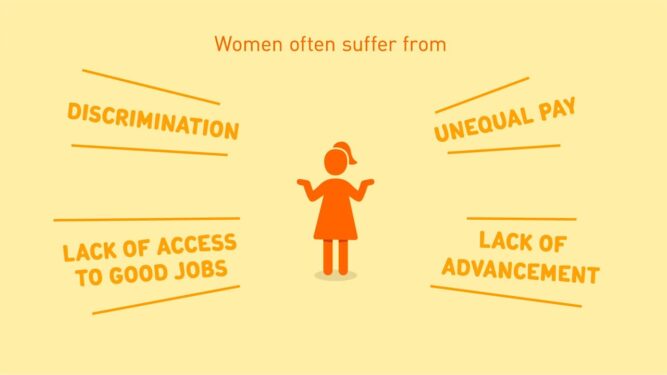DESPITE the concerted efforts in championing gender equality in the last decade, many societies have yet to achieve this.
According to a recent statistic from the World Economic Forum (2020), it would take 257 years for the world to achieve gender equality if no significant intervention is put in place.
This daunting statistic tells us that women would never have the opportunity to advance in our lifetime if governments, civil societies and business leaders do not explicitly assist women to excel and break the biases.
What are the biases that remain?
If you ask men and women “Have you observed biases against women in your organisation?”, most of them would likely answer “No, there are no biases. My company makes promotion decisions based on merits.”
This answer is predictable and correct because it is the best practice that companies develop promotion criteria and apply them in making promotion decisions.
Very few organisations in advanced economies would have explicit discriminatory policies. However, the fact is that biases are typically unconscious. Unconscious biases are implicit which means we are not aware of behaving in a biased manner.
Let me illustrate this with a real experiment. Across a three-year period, I asked over 100 of my MBA students and undergraduate management students to draw an image of a leader.
I assigned this exercise before I started the topic of leadership. Over 85% of students gave me an image of a male character. Some gave me non-human figures. Only about 5% gave me a female or female-like image. Why?
Here’s another illustration. I asked two students, one male and one female, each to choose one role for a student committee – a chairman or a secretary. The outcome, as you can predict, is the male student picked the chairman role and the female student chose the secretary role.
They did so voluntarily without negotiating with each other. If you asked me in the end, which role was more important to the success of the committee? I would say the secretary role. Without the secretary organising tasks and doing follow-ups, we would not have smoothly– run committee meetings.
In the end, we probably attached more credit and more attention to the chairman instead of the secretary. Why?
Most of us grew up with the idea that leaders are men, as evident by the drawings provided by my students. This gender bias in the students’ minds suggests the depth of the unconscious biases.
Biases are also manifested semantically
The leader of a committee is conventionally named “chairman”, not chairwoman. A boss is a man. To distinguish a male boss and a female boss, we add a word lady at the start or the end of the word “boss”. These expressions illustrate how pervasive unconscious gender bias is.
If we consistently name the person who chairs a meeting as a chairman, how could we expect a woman to take up this role? How could we convince women that they should take up leadership roles if they feel they would be stepping into men’s shoes?
Harvard’s Project Implicit provides worldwide, powerful statistics on gender bias.
In its online implicit association gender-career test, over the period of 2005-2015, 75% of the 846,020 respondents expressed automatic association of male with career and female with family. Among those, 19% demonstrated slight, 32% moderate and 24% strong automatic gender-biased association.
To break these unconscious gender biases, we first need to admit that we all grew up with biases.
It is not our fault that we possess these unconscious biases.
Next, we confront our unconscious biases by explicitly removing engendered vocabulary. For example, choose gender-neutral labels such as chairperson instead of chairman; police officer instead of policeman; firefighter instead of fireman. As such, we can make the society a bit less engendered.
For businesses, they can break the biases by looking at their company’s performance criteria and review them if they are lopsided toward masculinity rather than femininity.
Does your company focus more on ambition, drive and independence, or on perfection, resilience and teamwork? For the first, that means your company prefers male-like, masculine characteristics. For the latter, that means your company prefers female-like, feminine characteristics.
Let’s think deeper
The masculine characteristics need to go hand-in-hand with feminine characteristics to achieve success.
Ambition without a sense of perfection will not produce superior performance. Drive without resilience will not bring about results. Independence without teamwork cannot move the whole company forward.
If we prefer the masculine characteristics at promotion, we will likely get more men. If we do not allow ourselves to undermine the feminine characteristics, then we probably can get more women.
Companies need to re-look their selection criteria and the semantics, based on which they reassess their gender equality strategies.
Getting back to where we started, there is a time urgency for gender equality. If we don’t break the biases soon, the future of our daughters, granddaughters and great granddaughters will continue to be limited.
Now, is that what we want for our future generation? – March 8, 2022
Jane Terpstra Tong is an associate professor and the Diversity and Inclusion chairperson in Monash University Malaysia. Sharon Cheah is a PhD candidate of Monash University Malaysia school of business under the department of management.
The views expressed are solely of the author and do not necessarily reflect those of Focus Malaysia.












